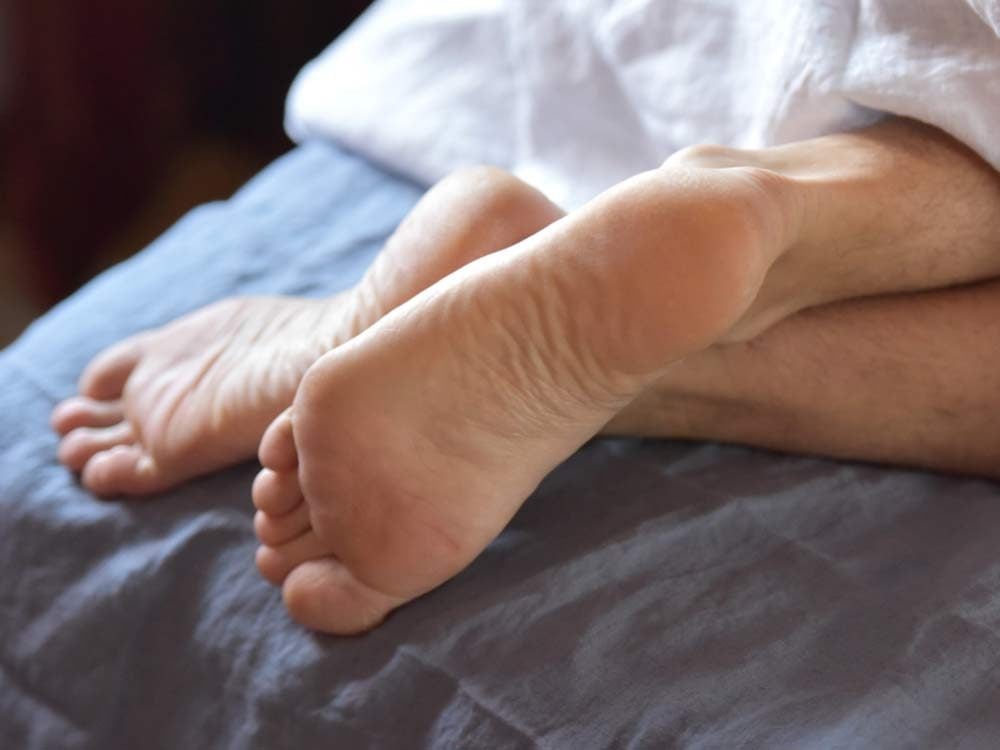
Is Restless Legs Syndrome Affecting Your Sleep?
You may know it as the urge to move or jerk your legs when you’re sitting or lying still, especially at night. Restless legs syndrome (RLS) occurs when brain cells send false signals of pain, discomfort, tingling and itchiness to nerve endings in the legs (and vice versa). Moving your legs turns off these signals, but the creepy-crawly sensations return as soon as you’re still again.
The syndrome is thought to result from an overproduction of the brain chemical dopamine during the day, which leads to an underproduction at night. Here’s what to do if your itchy, jerking legs keep you awake at night.
Here are nine ways to find relief from the symptoms of chronic fatigue.

1. Get Up and Walk
Get out of bed and walk for 10 minutes. Walking stimulates the nerves in your legs, turning off the itching signals to your brain. Why only 10 minutes? Research has found that moderate exercise can improve symptoms, but excessive exercise makes them worse.
Here are 10 Things That Happen to Your Body When You Start Walking 10,000 Steps a Day.

2. Do Toe Circles
Sit on the edge of the bed and draw circles with your toes. Like walking, the toe circles stimulate the nerves in your legs; they also stretch the legs and feet.
Check out these 9 Proven Treatments for Stasis Dermatitis.

3. Folic Acid
In one small study, researchers found that women with restless legs syndrome were deficient in this B vitamin, required for proper brain and nerve function. Taking folic acid supplements helped. Take 400 to 800 micrograms of folic acid a day, along with a 50-milligram B complex supplement.
These eight vitamins are a total waste of money—and could even be dangerous.

4. Massage Your Legs
Knead your calves, thighs and feet with a mixture of 15 drops lavender oil in 1/4 cup of massage oil. The massage relaxes the muscles and the lavender will help you relax overall.

5. Valerian and Passionflower
When taken together, these herbs relax muscles and improve sleep. Take 600 milligrams standardized valerian (shown here) and 300 milligrams passionflower before bed.
Suffer from insomnia? Try these seven sleep-promoting strategies!

6. Use a Cold Compress
Before you try to sleep again, pack bags of towel-wrapped frozen vegetables or ice packs around your legs. The cold compresses numb nerve endings while you sleep. The towels should absorb most of the moisture as the ice thaws.

7. Magnesium and Calcium
These minerals decrease spasms and quiet abnormal nerve messages. Take 150 to 300 milligrams magnesium and 300 to 600 milligrams calcium a half-hour before bed. Don’t write them off if you don’t see an improvement in your condition right off the bat: they’ll take several weeks to work.

8. Stop Smoking—and Lay Off the Caffeine
To prevent restless legs syndrome, limit caffeine, as it increases dopamine levels. Nicotine is another daytime dopamine raiser, so cutting back on or—better yet—stopping smoking will help, too.

9. Prescription Drugs for Restless Legs Syndrome
The drugs prescribed for restless legs syndrome are dopamine agonists. These drugs, including Mirapex (pramipexole), Permax (pergolide) and Requip (ropinirole), return dopamine levels to normal.
Here’s how much sleep you really need, according to science.